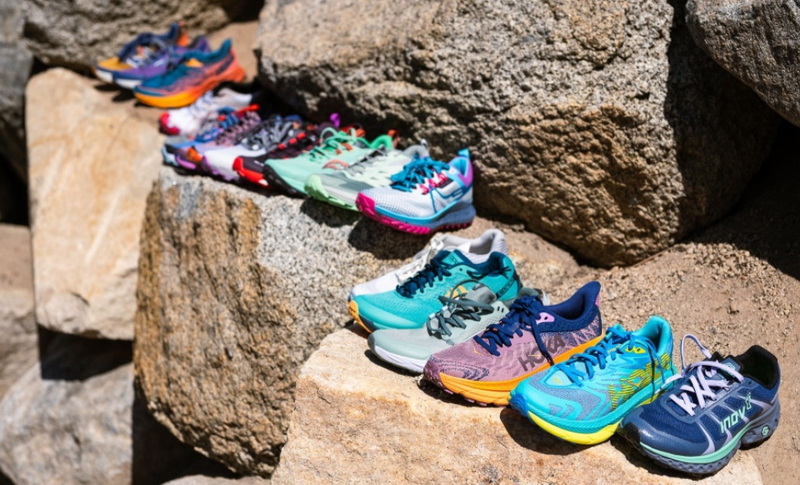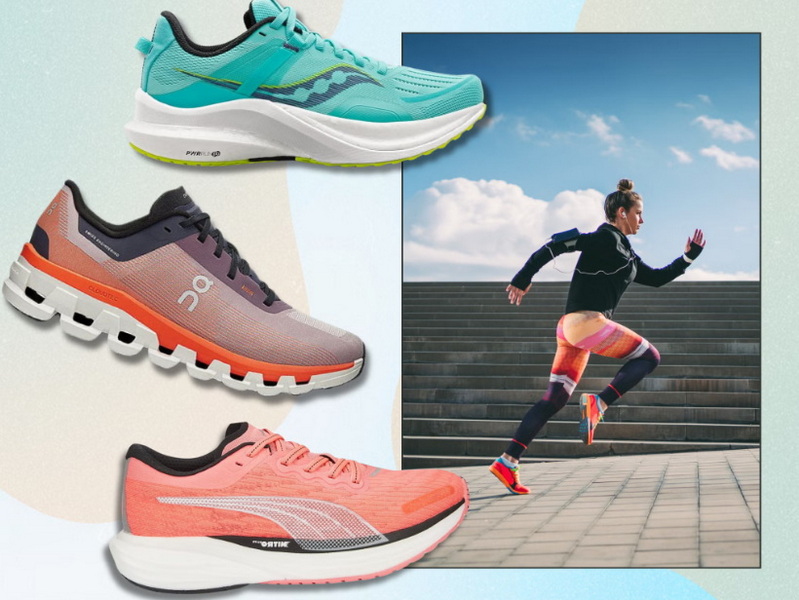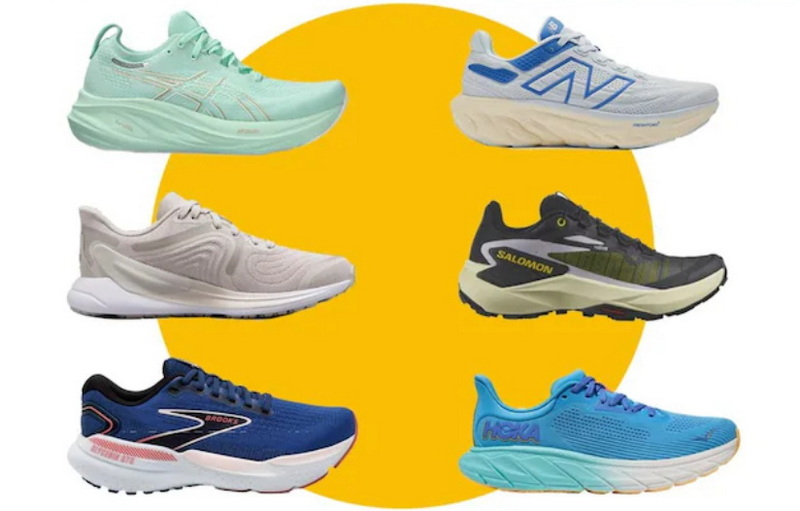Content Menu
● Understanding Women's Running Shoes
>> Key Features to Look For
● Top Running Shoes for Women in 2024
>> ASICS Novablast 4
>> Nike Pegasus 41
>> Brooks Glycerin 21
>> Hoka Mach X2
>> Saucony Endorphin Speed 4
● Specialized Options
● How to Choose the Right Running Shoe
● Importance of Proper Footwear
>> Signs You Need New Shoes
● Maintenance Tips for Running Shoes
● Conclusion
● FAQs
>> 1. What should I consider when buying running shoes?
>> 2. How often should I replace my running shoes?
>> 3. Can I use men's running shoes if I'm a woman?
>> 4. What is the difference between stability and neutral shoes?
>> 5. How do I know my correct shoe size?
● Citations:
Finding the perfect running shoes is crucial for any female runner, whether you're a seasoned marathoner or just starting out. With a multitude of options available, it can be overwhelming to choose the right pair. This guide will help you navigate through the best running shoes for women in 2024, highlighting their features, benefits, and what makes them stand out.

Understanding Women's Running Shoes
Women's running shoes are designed with specific anatomical differences in mind. Generally, women's feet tend to be narrower at the heel and wider at the forefoot compared to men's. Additionally, women typically weigh less, leading to softer midsole cushioning in their shoes.
Key Features to Look For
- Cushioning: Adequate cushioning is essential for comfort and injury prevention. The right amount of cushioning can absorb impact and reduce stress on joints.
- Support: Depending on your foot type (neutral, overpronator, etc.), you may need different levels of support. Stability shoes are designed for those who overpronate, while neutral shoes cater to those with a normal gait.
- Fit: A well-fitting shoe can prevent blisters and other discomforts. It's important to try on shoes later in the day when your feet are slightly swollen to ensure a proper fit.
- Weight: Lighter shoes can enhance speed but may offer less cushioning. Consider how you plan to use the shoes—training versus racing.
Top Running Shoes for Women in 2024
ASICS Novablast 4
The ASICS Novablast 4 has been crowned the best overall women's running shoe for its exceptional comfort and versatility. Weighing only 9.1 oz (259g), it features a generous stack height of 39.2 mm at the heel, providing excellent cushioning without compromising flexibility.
Pros:
- Highly comfortable with responsive cushioning.
- Versatile for various distances and daily activities.
Cons:
- Some may find it slightly bulky for speed work.
Nike Pegasus 41
The Nike Pegasus 41 is an excellent choice for daily training. It combines a plush ReactX foam midsole with two Air Zoom units for enhanced energy return.
Pros:
- Reliable performance across various terrains.
- Breathable upper suitable for all seasons.
Cons:
- Slightly heavier than some competitors.
Brooks Glycerin 21
The Brooks Glycerin 21 is renowned for its plush cushioning and smooth ride, making it ideal for long runs or recovery days.
Pros:
- Exceptional cushioning reduces impact on joints.
- Available in narrow and wide fit options.
Cons:
- May feel bulky for those preferring lightweight shoes.
Hoka Mach X2
The Hoka Mach X2 is designed for speed while still offering ample cushioning. Its lightweight design makes it a favorite among competitive runners.
Pros:
- Lightweight yet cushioned.
- Excellent energy return for faster paces.
Cons:
- Less durable than heavier models.
Saucony Endorphin Speed 4
The Saucony Endorphin Speed 4 is perfect for those looking to improve their speed without sacrificing comfort. It features a carbon-fiber plate that propels you forward with each step.
Pros:
- Great for tempo runs and racing.
- Responsive and lightweight design.
Cons:
- Limited cushioning compared to daily trainers.

Specialized Options
For women who require specific features due to foot shape or running style, there are specialized shoes available:
- For Overpronators: The Hoka Arahi 7 offers stability without being overly rigid. Its unique design provides support while maintaining comfort during long runs.
- For Trail Running: The Nike Zegama 2 provides excellent grip and protection on rugged terrain, making it ideal for off-road adventures. Its durable outsole ensures traction on slippery surfaces.
How to Choose the Right Running Shoe
Choosing the right running shoe involves several steps:
1. Assess Your Foot Type: Determine if you have flat feet, high arches, or a neutral arch. This will guide you toward stability or neutral shoes.
2. Consider Your Running Style: Think about how often you run, the distances you cover, and whether you run on roads or trails.
3. Try Before You Buy: Always try on shoes at the end of the day when your feet are swollen to ensure a proper fit. Walk or jog around the store to test comfort and support.
4. Check Return Policies: If you're shopping online, ensure there's a good return policy in case the shoes don't fit as expected.
Importance of Proper Footwear
Wearing the right running shoes is vital not only for performance but also for injury prevention. Poorly fitting or inappropriate footwear can lead to various injuries such as plantar fasciitis, shin splints, and knee pain.
Signs You Need New Shoes
Be aware of signs that indicate it's time to replace your running shoes:
- Uneven wear on the soles.
- Loss of cushioning (you feel more impact during runs).
- Pain or discomfort during or after runs that wasn't present before.
Maintenance Tips for Running Shoes
To prolong the life of your running shoes:
- Rotate between two pairs if possible; this allows each pair to decompress between runs.
- Clean them regularly by removing dirt and debris from the soles.
- Avoid washing them in a machine; instead, use a damp cloth or sponge.
- Store them in a cool, dry place away from direct sunlight.
Conclusion
Choosing the right running shoe can significantly impact your performance and comfort while running. The best women's running shoes in 2024 cater to various needs, from everyday training to competitive racing. Whether you prioritize cushioning, support, or weight, there is a perfect pair out there for you. Investing time in finding the right shoe will pay off in terms of both performance and enjoyment of your runs.

FAQs
1. What should I consider when buying running shoes?
When buying running shoes, consider your foot type (neutral, overpronator), the terrain you'll be running on (road vs. trail), and your personal preferences regarding cushioning and support.
2. How often should I replace my running shoes?
It's generally recommended to replace your running shoes every 300 to 500 miles, depending on wear and tear. Pay attention to signs of wear such as decreased cushioning or visible damage.
3. Can I use men's running shoes if I'm a woman?
Yes, many women can wear men's running shoes; however, it's essential to ensure they fit well since men's shoes are typically wider and have different proportions.
4. What is the difference between stability and neutral shoes?
Stability shoes provide extra support for overpronators (those whose feet roll inward), while neutral shoes are designed for runners with a normal gait who do not require additional support.
5. How do I know my correct shoe size?
To find your correct shoe size, measure your foot length and width while standing. It's often best to try on several pairs at a store or order from retailers with good return policies if shopping online.
Citations:
[1] https://runrepeat.com/guides/best-womens-running-shoes
[2] https://www.outdoorgearlab.com/topics/shoes-and-boots/best-running-shoes-womens
[3] https://theruntesters.com/running-shoes/the-best-running-shoes-to-buy/
[4] https://www.youtube.com/watch?v=5HRyjylLJt8
[5] https://www.runnersworld.com/gear/a25578469/best-running-shoes-for-women/
[6] https://www.youtube.com/watch?v=gu4h049NuYg
[7] https://www.womensrunning.co.uk/gear/best-womens-running-shoes/
[8] https://www.telegraph.co.uk/recommended/leisure/fitness/best-running-shoes-women/
[9] https://www.independent.co.uk/extras/indybest/outdoor-activity/running/best-running-shoes-women-nike-adidas-asics-b1807915.html
[10] https://www.nytimes.com/wirecutter/reviews/best-running-shoes/

















